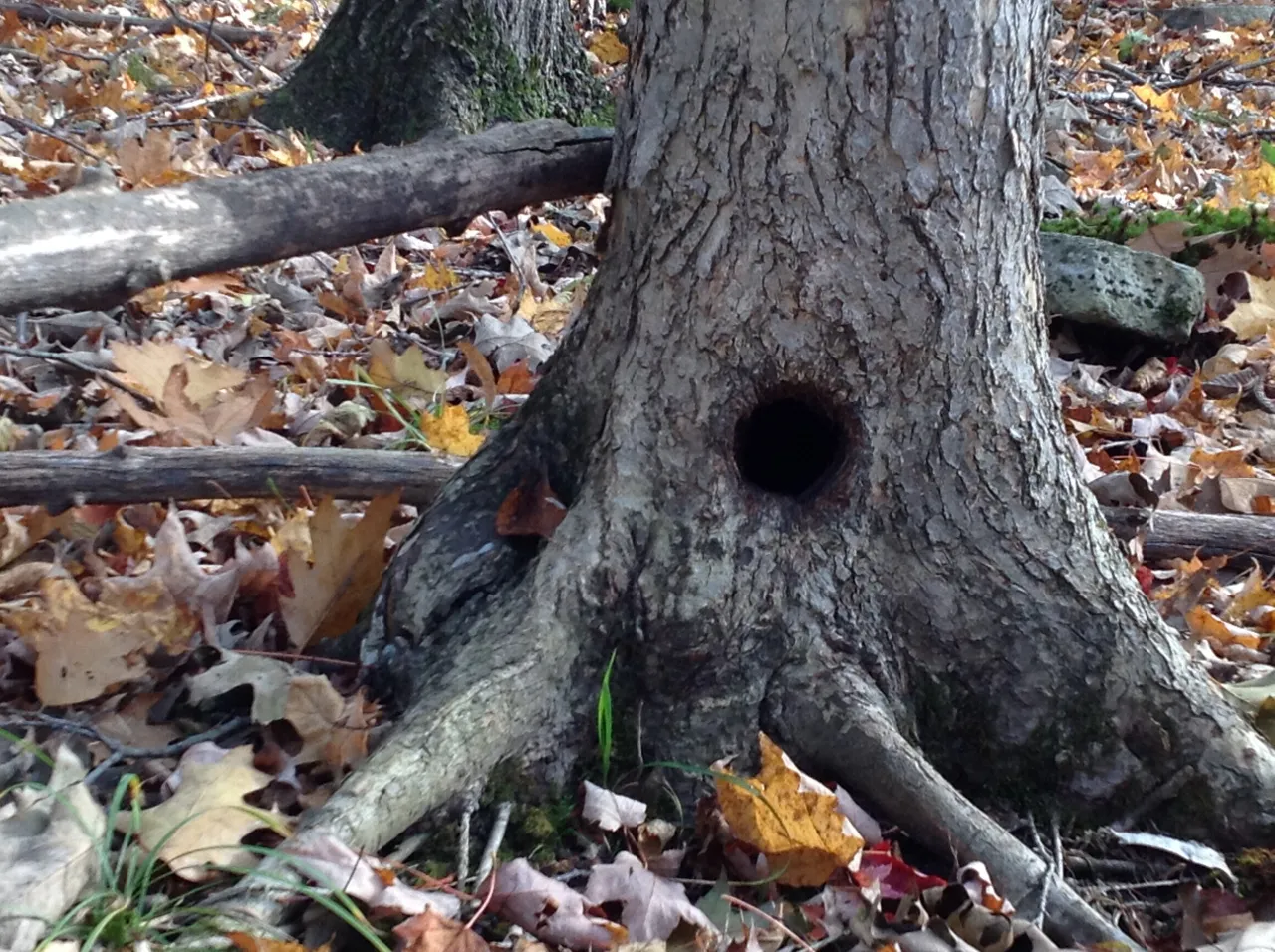
Hidden in Stony Swamp was something I had never seen, so thinking last Friday might be one of the last warm days of the season, a friend and I set out to find it. A great day for a walk, it was a balmy 16 C (60.8°F) with the leaves just past their peak of color and now gently wafting down.
Since we had all afternoon, we didn't seek out the closest of the numerous parking lots that had the shortest trail to our destination. Stony Swamp is a large area of 64 trails totalling over 40 km (24.85 miles) but they are well-marked and we knew roughly where to go. Close was good enough.

We parked the car, paused at the signs to get our bearings and then set off down the leaf covered boardwalk. Such a nice boardwalk but the whole trail isn't like this - it must get wet here.

Among the habitats are sugar maple forest, alvar clearings, bogs, and regenerating pastures.
We very quickly passed through the alvar clearing, below, a broad flat limestone covered area with thin soil. It's home to small prairie-like plants.

Next, we passed an area that must get pretty wet judging by the bulrushes there - you might call them cattails.

Once past those, we were back in the bush, first dense mixed deciduous and coniferous, then gradually it thinned out to mostly deciduous trees, sugar maples.

Sugar maple forests are lovely places to walk in the fall. Each step was preceded by a swishing sound as our feet brushed the fallen leaves. Maybe half the leaves had come down. There were enough that you had to watch they didn't obscure the trail. Sunlight streamed through the canopy casting long shadows on the ground.

Speaking of the trail, the vast trail system is well-marked and maps are available for downloading to mobile phones. Signposts are put at trail junctions. We had wanted to see this beautiful maple forest but knew our ultimate destination was back the way we came, so we retraced our steps.
We crossed the road at the car park and started down the trail leading in the opposite direction. It kind of reminds me of the first one.

There was as much variety here as on the last trail. It seems there had been a farm at one time with cleared pasture, now regenerating.
What do we have here? It looks like a home for some little creature. While there had been many signs of woodpeckers, I doubt this hole belongs to a bird.

This is younger forest than the last one we were in and those trees with the white bark are birch trees. The bark peels off quite easily and the traditional birchbark canoes are made from them.

Sometimes we walked on a path, sometimes it was an old bush road, sometimes it seemed like former cow trail. We walked along this section that was regenerating after a large fire in 2012. It was a little eerie but still full of life here. We could see dead and charred trees and some that had been cut down recently. Was this a result of our recent tornados? It was in this area nearer the water that we found the snakes for my Northern Water Snake post.

And then the path widened and was more like a road. Notice the trail signpost on the left.

Yes! We have reached our destination!


What are those ruins?
This is the Flood lime kiln. It's one of only a few remaining examples in Canada of a 19th century lime kiln, the oven or furnace used to create lime from limestone. Lime was once produced in these small kilns both for agriculture and mortar for building. This one, owned by Francis Flood, was built in the late 1800s and went out of business in 1906 when people switched to using Portland cement. It was forgotten and then rediscovered in the 1970s and restored in 1999. The limestone for the kiln came from the small quarry behind it.
We spent the afternoon hiking several trails from the Stony Swamp parking lot on Old Richmond Road. The trails were NCC-24 and NCC-25. NCC-25 (Rideau Trail), from where we started, led to the lime kiln the long way. The most direct route is on the same trail but starting from the parking lot on Moodie Drive when the walk is only .5 km (1/3 of a mile)
References
Stony Swamp, Ottawa
Stalked by the Birds
Northern Water Snake
Images
All photos from the iPad of @kansuze.
Video by CapitalGems.ca.

I hope you enjoyed the walk. Let's do it again some time.
@kansuze